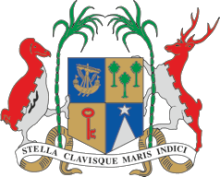Resource information
The Act makes renewed provision for – (a) generally the protection of wild fauna and flora; (b) giving effect to the Convention on International Trade in Endangered Species of Wild Fauna and Flora (CITES) and any other biodiversity related Convention to which Mauritius is or may become a party; and (c) the identification, control and management of reserved lands and private reserves, and for related matters. The Act establishes the Native Terrestrial Biodiversity and National Parks Advisory Council, the National Parks and Conservation Service, the Invasive Alien Species Committee, and a National Parks and Conservation Fund. It also appoints, for the purposes of CITES, the Director of the Service. Management Authority. This Act also provides for coordination with other laws (i.e. the Forests and Reserves Act or the Fisheries and Marine Resources Act). The Act consist of 54 sections divided into 12 Parts“Animal” for purposes of this Act includes an animal from any species, animal parts or derivatives, fauna, fish, aquatic animal, shellfish and egg. “Fish” has the same meaning as in the Fisheries and Marines Resources Act. The Council shall be an advisory body to the Minister. The Director of the Service shall, among other things, keep under review the need to reserve land and promote conservation in relation to the use or development of State and private land. He or she shall also be responsible to issue permits in respect of protected fauna or flora. The act defines functions of the Director as the CITES Management Authority. There shall also be, for the purpose of CITES, a Scientific Authority.The President may, by Proclamation, declare any State land to be a National Park or Special Reserve. Every area listed in Part I of the First Schedule to this Act shall be a Closed Reserve, which shall be strictly used for the purpose of conservation and the protection of biodiversity. The Minister may, on the recommendation of the Director, designate such private land as may be prescribed to be a private reserve for – 14 (a) the protection, enhancement or restoration of natural ecosystems, wildlife habitat or habitat of rare, threatened or endangered plant or animal species; (b) the retention of significant botanical, zoological, geological or morphological features of the land; or (c) the conservation of air, soil or water. The Minister may also establish buffer zones around a private reserve or reserved land. The Director shall prepare a draft management plan for every area of reserved land and every buffer zone.The Act furthermore provides with respect to, among other things, protection of freshwater biodiversity, trading in prescribed wildlife, hunting authorizations and restrictions, importation of exotic wildlife, a Special Technical Committee for the purpose of controlling wildlife, CITES permits, registration and authorization of traders in prescribed species and producers of prescribed captive bred animals and artificially propagated plants of such species, enforcement, regulation-making powers of the Minister and offences.
Amended by: Native Terrestrial Biodiversity and National Parks (Amendment of Schedule) Regulations 2016 (GN No. 201 of 2016). (2016-09-29)
Repeals: Wildlife and National Parks Act 1993 (No. 13 of 1993). (1994-03-01)
Repeals: National Parks and Reserves Regulations 1996 (G.N. No. 44 of 1996). (1996-04-03)



